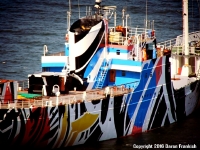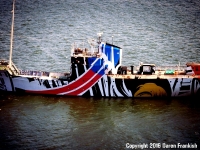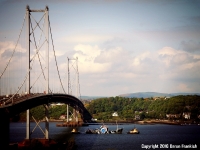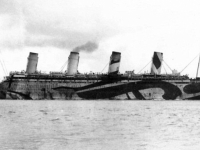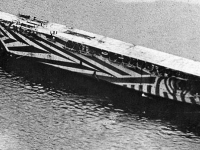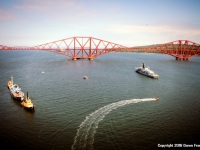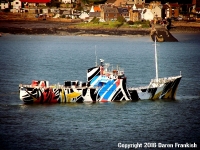Arts
Centenary of the Battle of Jutland
Dazzle Ship by Artist Ciara Phillips
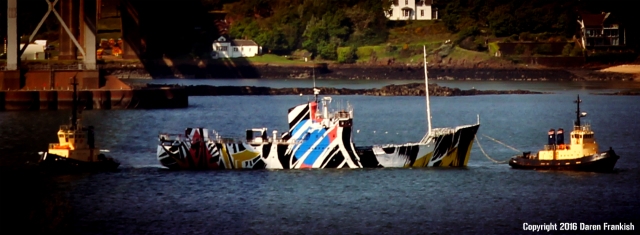
Artist Ciara Phillips creates 'dazzle ship' (Source: © 2016 Daren Frankish)
USPA NEWS -
South Queensferry - Saturday 28 May - A series of events commemorating the 100th anniversary of the Battle of Jutland, the largest naval battle of the First World War. On show is Artist Ciara Phillips' Every Woman Dazzle ship.
Edinburgh Art Festival -
Designed not to camouflage, but to distort a ship´s appearance when viewed through a telescope, “˜Dazzle´ was developed by the British marine artist Norman Wilkinson to counter the threat posed by German U-Boats. Using strongly contrasting blocks of colour, stripes and curves, dazzle designs transformed ships into a confusing array of multi-directional shapes, making it difficult to gauge a ship´s direction or speed.
Designed not to camouflage, but to distort a ship´s appearance when viewed through a telescope, “˜Dazzle´ was developed by the British marine artist Norman Wilkinson to counter the threat posed by German U-Boats. Using strongly contrasting blocks of colour, stripes and curves, dazzle designs transformed ships into a confusing array of multi-directional shapes, making it difficult to gauge a ship´s direction or speed.
Nominated for the Turner Prize in 2014, Ciara Phillips works mainly in the medium of printmaking, attracted both by the physical process itself, as well as the long established history of print as a medium for exploring and expressing political and social ideas. Often working on a large scale, Phillips has co-opted entire rooms as surfaces on which to apply her prints, bringing together multiple layers of individual images and repeated pattern in a single installation. Every Woman significantly expands this approach, drawing on several of Phillips´ earlier screenprints to cover the entire surface of the ship with a bold gestural design.
Unlike other forms of camouflage, the intention of dazzle is not to conceal but to make it difficult to estimate a target's range, speed, and heading. Norman Wilkinson explained in 1919 that he had intended dazzle more to mislead the enemy about a ship's course and so to take up a poor firing position, than actually to cause the enemy to miss his shot when firing.
Dazzle attracted the notice of artists such as Picasso, who claimed that Cubists like himself had invented it Edward Wadsworth, who supervised the camouflaging of over 2,000 ships during the First World War, painted a series of canvases of dazzle ships after the war, based on his wartime work. Arthur Lismer similarly painted a series of dazzle ship canvases.
Click on "more information" link below to view Youtube video.
Click on "more information" link below to view Youtube video.
more information: https://www.youtube.com/watch?v=axFe9iIvTU4&feature=youtu.be
Liability for this article lies with the author, who also holds the copyright. Editorial content from USPA may be quoted on other websites as long as the quote comprises no more than 5% of the entire text, is marked as such and the source is named (via hyperlink).


